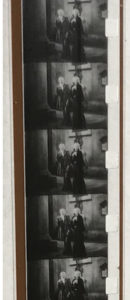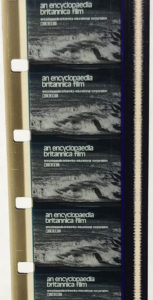Home Movie Transfer
Regular 8mm, Super 8mm & 16mm Home Movie Film to Digital mp4
(All film types including: Silent, Optical Sound, and 16mm Magnetic Sound)
Featuring online password-protected proofing. View before you buy. Decide which ones to preserve for generations yet unborn.
All film is duplicated to 1080p.
All Work Performed On-site
All transfer, conversion, and copy or duplication of Regular 8mm (silent and sound), Super 8mm (silent and sound), and 16mm home movie film (both optical and magnetic sound as well as silent) to digital is done in Chelsea, Michigan. The person you hand your irreplaceable family legacy memories to is the one who will personally either oversee or perform the carefully designed tasks that will transfer (duplicate) your legacy Easter Sunday home movie films to modern and durable professional digital 1080p mp4 media, both h.264 and h.265 CODECS.
Editing and Enhancements on All Films
All home movie films (whether 8mm or 16mm) are downloaded to a 1080p format with professional-grade equipment. Each download is then individually uploaded to an editing sequence where standard enhancements are made. These typically include computer-assisted professional complimentary color correction, where beneficial, and the deleting of empty footage. Each reel is then transcoded for stunning 1080p digital mp4 delivery. A low-resolution (but highly viewable) watermarked version is uploaded to a password-protected website for your proofing together with friends and family for viewing on a global scale. If complimentary digital enhancement (such as color correction) was applied to your film, the proof edition illustrates the differences in a side-by-side fashion.
Within our proofing environment, you may not only accept or reject items but request additional paid services as well. For example, you may want titling added.
Delivery on DVD media is available for an additional fee (down-sampling to 480p will be required due to DVD limitations).
Flicker?
Because of our attention to critical telecine techniques, you will never see flicker or what is commonly called a “rolling bar” in your transferred (duplicated) Regular 8mm, Super 8mm and 16mm home movies, whether silent or with sound.
Also, because we use an ariel mode of projection rather than frame-by-frame, there is a very fluid motion. A frame-by-frame mode works nicely for Hollywood blockbusters originally filmed at 24 frames per second (called “flying spot”) but is less than optimal for typical home movies originally captured at 18 frames per second. Please see a blog post we have prepared on frame-by-frame technology where these limitations are explained in detail.
Special Attention to Archival and the Viewing Experience
To the largest extent possible, we will maintain any archival scheme or arrangement your films may have. Oftentimes, the films have handwritten notes on film leaders, reels, boxes, or film cans. These notes (written by our dearly beloved, but now-departed, mom and pops) many times provide important clues to family history and play a large part in identifying film content. In processing your films we will make every effort to maintain and preserve such archival information during conversion, transfer, and duplication. Preserving the link between the physical media and its digital duplication is a critical part of the viewing experience process. The entire process of legacy memory duplication to digital is far more than merely duplicating an image. We are duplicating a legacy memory.
For the film duplication to digital process, it is critical to note that your film is returned to you as you gave it to us. We DO NOT splice smaller reels onto larger reels. Our goal is to maintain your films in the configuration that you gave them to us. If we were to alter the configuration of the original media, critical archival information would be lost forever.
Custom Titling Option
Custom titling is also available for a nominal fee. With custom titling, text appears on the screen before its associated reel, describing briefly what the reel is all about. Use as much text as you like, but shorter is usually better. This is best accomplished during the proofing phase when your duplicated media have been uploaded to a password-protected website. There is no need to figure these things out before bringing your films to us. Titling is better accomplished once the proofs appear online.
Want to Edit Yourself?
For those who view the duplication of their family legacy with particular interest and have the personal time available, we offer uncompressed media at an additional fee.
Confidence
We are able to say with confidence that the quality we deliver with our duplication, transfer, and copy process of Regular 8mm, Super 8mm, and 16mm home movie films (silent and magnetic or optical sound) to the digital domain is as good as it gets.
You might consider using our online proofing as a tool to gage differences with other service providers. This is particularly useful if you have a large library to duplicate. Give us a sample reel from your library and we will upload a proof in full-resolution, with a watermark. We will then return that film reel back to you (without a fee or expectation of a fee) so that you can take it to other service providers in your local area. That online version will remain viewable as long as you stay in-touch telling us you need it. If you ask the other service providers, they may or may not volunteer to do that one reel for free for comparison purposes.
While we at W. Cardone Productions are not able to offer large volume quantity discounts, other service providers may. You may find that another service provider delivers acceptable quality at an attractive discount custom for you that you cannot dismiss.
You owe it to yourself to be certain that your family legacy memories on home movie film converted to digital mp4 (both h.264 and h.265 CODECs ) retain all the quality that modern technology can deliver.

Home Movie Film to DVD
Regular 8mm
 This format was an incredibly clever concept of Eastman Kodak in 1932. It was the depths of the Great Depression and the geniuses at Kodak thought of a way to cut costs of home movies dramatically bringing home movies to the masses and massive profits to Kodak. It worked! 8mm home movie film was mass marketed to the public starting in 1932 but only took off big-time after the war. Its use continued until the 1990s when home video took over the market. A sample of 8mm home movie film is shown in the illustration.
This format was an incredibly clever concept of Eastman Kodak in 1932. It was the depths of the Great Depression and the geniuses at Kodak thought of a way to cut costs of home movies dramatically bringing home movies to the masses and massive profits to Kodak. It worked! 8mm home movie film was mass marketed to the public starting in 1932 but only took off big-time after the war. Its use continued until the 1990s when home video took over the market. A sample of 8mm home movie film is shown in the illustration.
Regular 8mm home movie film was also called “Double 8.” The reason for this was that the film was physically 16mm film but with two sides–a left and a right side. It was important to have sprocket holes on both sides for precision registration of each frame during its exposure. When the first side was exposed the camera operator would flip over the cassette and expose the other side of the film. The cassette was then sent to a photo lab for processing where it was sliced down the middle making two 25 ft. 8mm film clips. The two clips were then spliced together to make one 50 ft reel.
Regular 8mm Sound
 We at W. Cardone Productions are one of the very few legacy media duplication services that are able to process this extremely rare Standard or Regular-8 movie film format with integrity.
We at W. Cardone Productions are one of the very few legacy media duplication services that are able to process this extremely rare Standard or Regular-8 movie film format with integrity.
The 8mm standard format worked very nicely for the consumer from 1932 upwards to about 1965 when the Super-8 format became available. However, Standard or Regular-8mm had no sound capability. To introduce a sound capability for Regular-8mm films would require a massive infrastructure adjustment within the industry for a format that was already widely popular. The industry, however, came with a nice idea that did not require a very great investment and that would have a very wide appeal in the consumer community. New projectors were offered with a magnetic sound capability that would play all of the existing silent 8mm home movies. Families with 8mm home movies could send in their films to a lab to have a magnetic stripe added. When these newly processed films were then received by their owners, they could play the films in these new projectors having a matching sound capability and record a narration that would then remain with that film for ever and ever.
A sample of Standard or Regular-8 film with a magnetic stripe is shown on the left. Notice that there are two stripes, a narrow and a wide stripe. Two separate and distinct recordings could be made independent of each other. Obviously, the wide stripe was the logical choice for a best chance at having a viable recording. But a second, narrower, stripe was possible where the sprocket holes were not in the way.
Super 8mm (Silent & Sound)
 Launched (again by Eastman Kodak) In 1965, Super 8mm home movie film was a noticeable quality improvement over regular or double 8mm film. The sprocket holes were made smaller allowing for more projection area. A sample of Super 8 film is shown on the right. If you look carefully at the illustration you will see magnetic striping on both sides. The strip is wider on the left than the one on the right. The wider strip was for recording audio at the time of the film being shot. The more narrow strip on the right was for families to record narration during projection without disturbing the original recording.
Launched (again by Eastman Kodak) In 1965, Super 8mm home movie film was a noticeable quality improvement over regular or double 8mm film. The sprocket holes were made smaller allowing for more projection area. A sample of Super 8 film is shown on the right. If you look carefully at the illustration you will see magnetic striping on both sides. The strip is wider on the left than the one on the right. The wider strip was for recording audio at the time of the film being shot. The more narrow strip on the right was for families to record narration during projection without disturbing the original recording.
16mm (Silent & Sound)
 Eastman Kodak introduced 16mm movie film in 1923 but its cost was prohibitive for the masses. It was only for professionals and serious hobbyists (the idle rich). Then in 1932 Kodak introduced 16mm optical sound film.
Eastman Kodak introduced 16mm movie film in 1923 but its cost was prohibitive for the masses. It was only for professionals and serious hobbyists (the idle rich). Then in 1932 Kodak introduced 16mm optical sound film.
Magnetic audio was invented in 1943 but not used in film until the mid 1960s. Magnetic sound for 16mm film was almost exclusively used by TV news gathering in the field. The sound strip appears on the right margin of the illustration.

